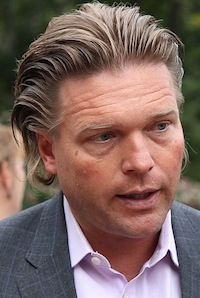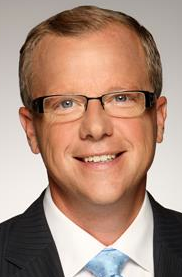Do you drain a Lake of Fire or do you dam it?

Whatever it takes, Wildrose Party activists are expected to moderate the tone of their policies at their weekend policy convention in the booming central Alberta city of Red Deer. A delicate and sometimes shaky coalition of libertarians and social conservatives (among other groups), Alberta’s official opposition party will learn from the mistakes they made in the 2012 election. On the cusp of victory, offensive remarks made by social conservative candidates in Calgary and Edmonton scared many moderate Albertans to support the long-governing Progressive Conservatives at the ballot box.
Since forming the official opposition with 17 MLAs, Ms. Smith has led a disciplined front-bench that has in many cases driven the government’s agenda, or at the least frustrated government ministers unaccustomed to their aggressive style. Implementing tactics used by the Ottawa Conservatives, the Wildrose have been relentless in their opposition to the forty-two year old governing PC Party.
Fighting back against the Wildrose, or at least trying to, Tory environment minister Diana McQueen emerged from her legislature office yesterday to attack Wildrose leader Danielle Smith’s position on climate change. While Ms. Smith’s party is undoubtably weak on environmental issues, especially on the important climate change file, the Tory government’s environmental record is not much better. While the Alberta government is doing more on this file than it has in a decade, its plan appears to be propped up by snippets of truth and focus group tested sound bites.

The Wildrose are looking for second chances and there is opportunity for them. With drastic cuts to education and post-secondary education, constant political meddling in the health care system and fears that public sector pension changes may negatively impact the retirement prospects of hundreds of thousands of Albertans, Alison Redford’s Tories threaten to alienate the electoral coalition of moderate voters (including many former Liberal voters) who helped them narrowly win re-election. Shooting from their hips (and frequently missing their targets), cabinet ministers Thomas Lukaszuk, Jeff Johnson, Fred Horne, and Doug Griffiths often confuse their own confidence with arrogance. The Tories do not give any impression that they were humbled by their near-defeat in last year’s election.
Some Tories may point to the electoral success of Premier Ralph Klein following his drastic budget cuts in the early 1990s, but this is a very different political environment, and I am sure that most Albertans would agree that Ms. Redford is no Mr. Klein.
A recent poll from Leger Marketing, for what it’s worth three years before the next election, shows Ms. Redford’s and Ms. Smith’s parties competing with mid-30 percent range support. The poll also shows that more than half of Albertans disagree with the government’s performance, but the Wildrose’s support in the polls suggests voters have not settled on an alternative.

This weekend and over the next three years, the Wildrose Party could look to Saskatchewan for inspiration. Stalled for years in the opposition benches, the conservative Saskatchewan Party undertook a move to modernize its image and policies when Brad Wall became the party leader in 2004. The unruly coalition of Tories and Liberals led by a former Reform Party MP had been unable to defeat the institutionalized New Democrats, who dominated in that province’s major cities. Under the smart and savvy Mr. Wall, the Sask Party modernized, and slowly began to encroach into NDP held urban constituencies.
After his party finally defeated in NDP in 2007, the conservative Mr. Wall has become one of Canada’s most popular provincial leaders. Like the NDP did to the Sask Party, and the Tories did to the Wildrose in 2012, Albertans can expect to be berated by rounds of “ooga booga, the Wildrose is scary” ads in the next election. The part that will be missing from those ads is that many, if not most, current Wildrose supporters were sitting comfortably in the Tory camp until about three years ago.
Wildrose success is not entirely about policy. Planting the seeds of doubt in Ms. Redford’s ability to run an honest government will also be key to the Wildrose Party’s success in the next election. Ms. Redford’s tendency to avoid controversy by hiding the truth or bending the facts is something that many political watchers have noted. Her office’s decision to block requests to release details of more than $2 million in severance packages given to former premier’s office staffers planted one seed of doubt. Her actions, her words, and people she surrounds herself have planted others. Two bad seeds that might not go away, controversial former PC MLAs Mike Allen and Peter Sandhu, are expected to apply for re-entry into the Government Caucus.
And the Wildrose do not just need Tory voters to vote for them, they also need former New Democrat and Liberal voters to return to their prior allegiances (a key reason behind Ms. Smith’s province-wide debate tour with NDP leader Brian Mason).
So, it’s clear the Wildrose needs to moderate the tone of their policies to attract new voters, but they can also benefit greatly from the seeds of doubt that the Redford Tories appear to be planting each week.

4 replies on “Wildrose can grow from Tory seeds of doubt”
[…] the line, the government is sure to resurrect what blogger Dave Cournoyer calls the “ooga-booga-the-Wildrose-is-scary” approach that worked in the last […]
*sigh* Red Deer is hardly “central”. The southern boundary of Alberta is the 49th parallel, and the northern boundary is the 60th, which means the north-south centre of Alberta is along the 54 degree, 30 minute line (slightly north of Westlock). Even Edmonton, therefore, which boasts of being in “northern Alberta”, is south of that line, and so not truly “northern”.
Northern Alberta is a huge, underserved and largely ignored swath of territory, larger than most European countries, with only two major population centres (Regional Municipality of Wood Buffalo, i.e. Fort McMurray, and the City and County of Grande Prairie). It is the source of a great deal of Alberta’s wealth, not only because of the well-publicized oilsands around Fort Mac, but because of more conventional oil and gas activity in other parts of the north, as well as extensive forestry (a renewable resource if managed properly) and agriculture.
Brad Wall is hardly a good example. Much like Danielle Smith, his policies are based on populism and are anything but conservative.
Brad Wall is a liberal. Anything but conservative.